We are now in the next stage of our phase shift experiment!
The first steps
Remember, we have two groups: the control group and the experimental group, with eight Arctic ground squirrels in each group. The control group is on a pretty normal squirrel schedule: 9AM-7PM, while the experimental group was phase-shifted to be just the opposite: 9PM and 7AM. We want to see how the altered schedule affects their energy usage when they are released back into their natural habitats. You can read this post for a more thorough explanation of the first phase of part of the experiment. Cory said that he is not aware of any other research that has done something similar with any species. We are pioneers!
The squirrels stayed in the environmental chambers where we controlled light, temperature, and food intake for ten days.
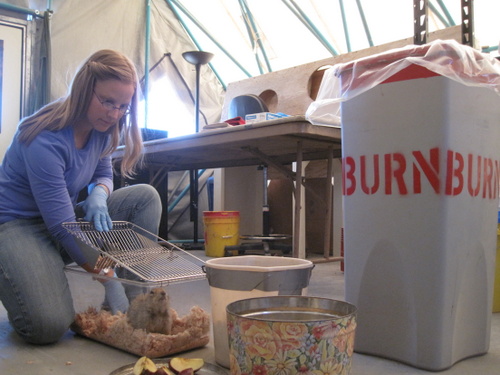
Where we are now
After ten days, we released the squirrels back to the same area where they were originally captured. We released the squirrels over the course of two days, four at a time. Before the squirrels were released, quite a bit of work had to be done.
Before releasing the squirrels (Work at the lab)
- Transport the four squirrels up for release from the environmental chamber to the lab
- One at a time, transfer squirrel to anesthesia chamber
- Weigh squirrel after it is anesthetized. Cory or Jeanette use this weight to calculate the exact dosage of doubly-labeled water that the squirrel will receive by injection.
- Make sure all squirrels have a PIT tag. If not, add one.
- Add a light collar and radio transmitter to every squirrel
- Change ear tag colors to identify the squirrel as part of the phase shift experiment.
- Take a blood sample from each squirrel (usually by toenail clipping. Remember how much your dog bleeds if you cut its nails too short? The same is true for squirrels)
- Inject each squirrel with doubly-labeled water. This will be used to calculate the amount of energy the squirrel uses.

- Make sure all data is recorded correctly; gather supplies needed for the field, and give squirrel time to recover.
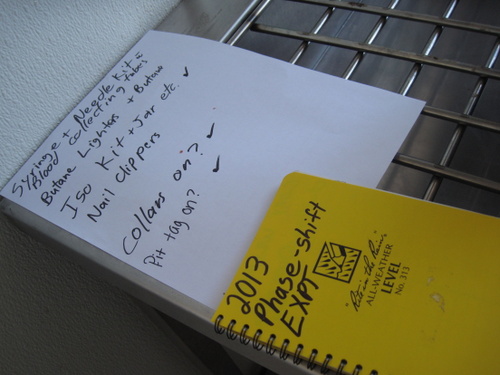
Before releasing squirrels (In the Field)
Once we inject the squirrel, the clock starts. Ideally, another blood sample needs to be taken one hour after injecting each squirrel and just before releasing it. Normally, this would not be a problem, since the squirrels only live about 20 minutes away from Toolik. However, construction just began on the Dalton highway on the stretch of road between Toolik and our research site at the Atigun River, turning our 20 minute drive into a 40-60 minute drive.
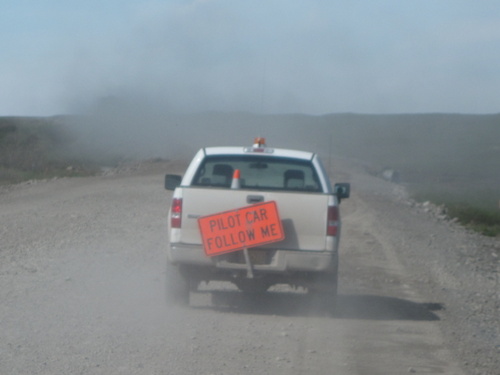
At the research site, we quickly set up a makeshift workstation on the tailgate of the truck, anesthetize each squirrel one at a time, and take the next blood sample. The tubes of blood samples have to be labeled and sealed with the butane torch (quite a challenge in the rain and wind). After waking up from anesthesia and eating some carrot, we return the squirrels to their burrows.
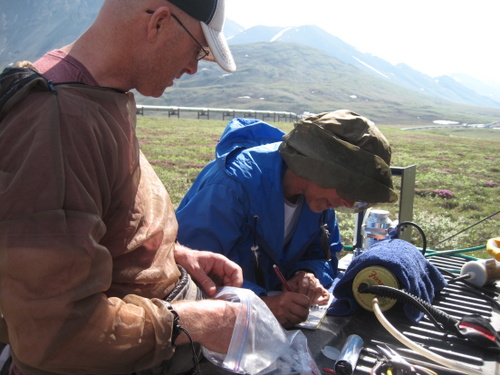
Most of the squirrels that I released looked a little confused at first. They spent some time looking around before either running into their burrow or taking off across the tundra. When we took them into captivity, the tundra was still brown. Now it is almost completely green and covered in vegetation. That has to be a bit confusing for the squirrels!
Recapturing squirrels and analyzing data
The next few days are trapping days. We need to recapture all 16 squirrels for additional blood samples at 48 hours and 96 hours after their injection. We are trapping in the areas where we last captured the squirrels and keeping our fingers crossed that we can capture everyone that we need in the times that we need them. All of this blood will be processed and analyzed back in Anchorage. Since the squirrels in the experiment are wearing radio collars, we can use radio telemetry to help us attempt to locate the squirrels. We just started toying with this yesterday.
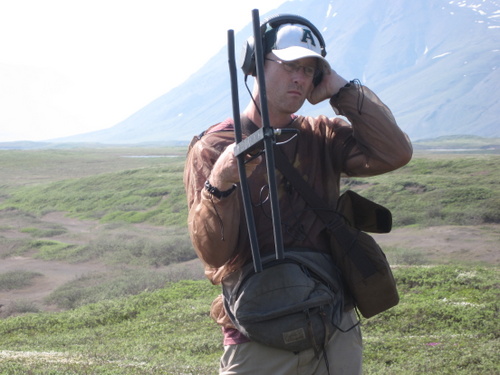
Eight to ten days after the squirrels were injected (after I leave Toolik), all of the squirrels will be recaptured and their light loggers will be downloaded. Some of the squirrels in the experiment have body temperature loggers implanted. They will undergo surgery to have the loggers removed. All the data from the blood samples, light collars, and body temperature loggers will have to be carefully analyzed for patterns and trends before any conclusions can be drawn. It will not be a fast process! Science takes time and careful thought.
Singing in the rain
Since we are in a race against the clock to get the blood sample after the injection, we had to work in the pouring rain one evening. Kate, Jeanette, and I made the best of it by singing in the rain. Cory filmed our rendition of “My Squirrel” in the truck while we waited for the rain to subside enough to release the squirrels. Enjoy our stunning performance!
http://.be


Comments